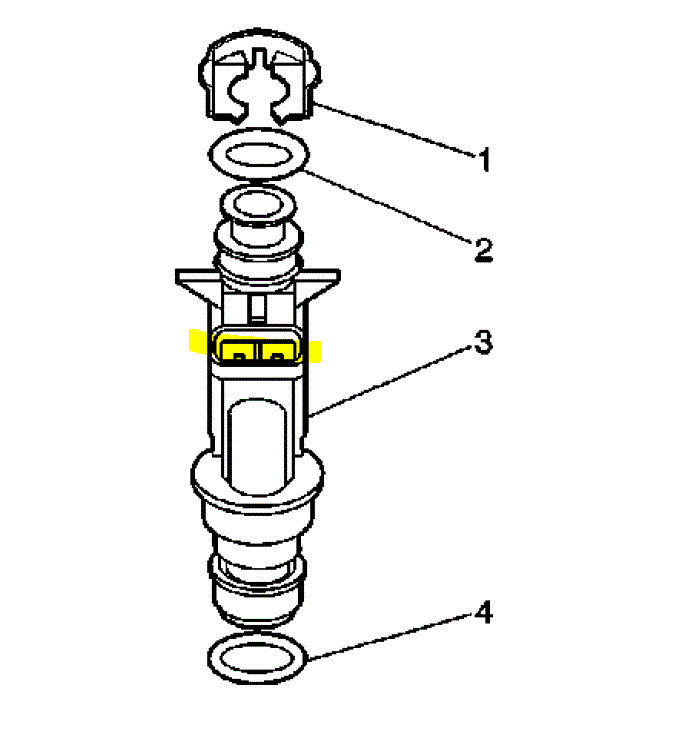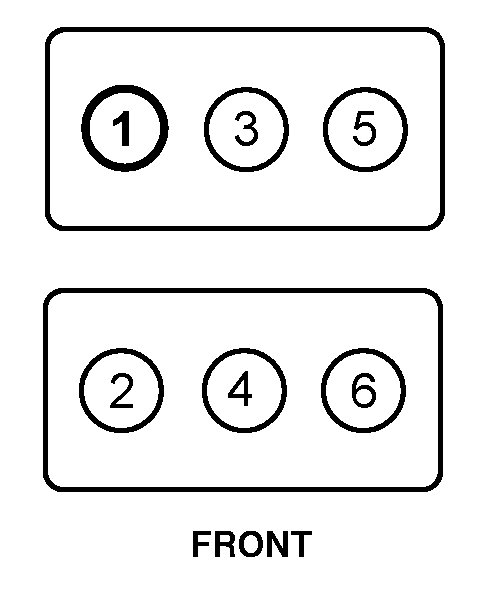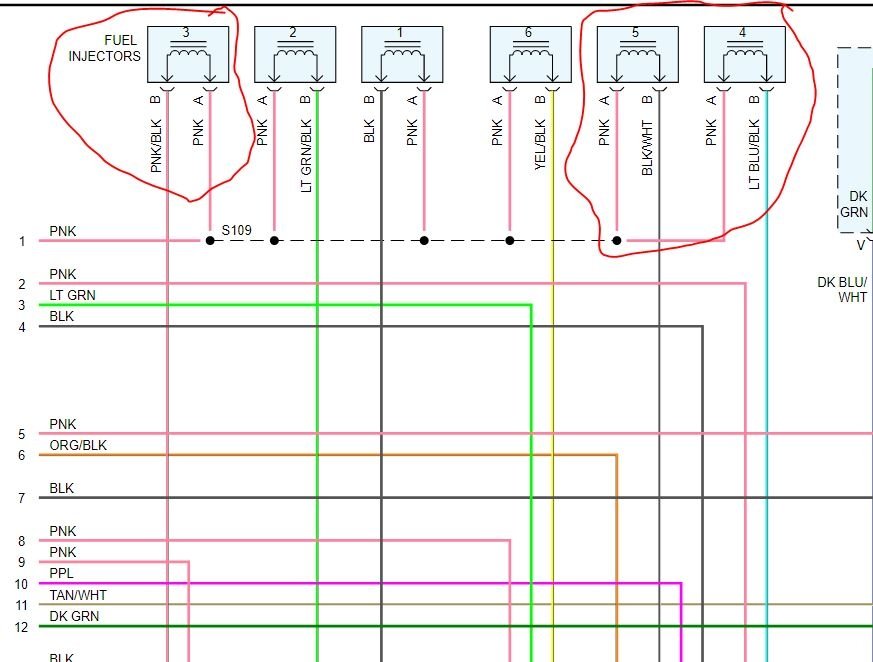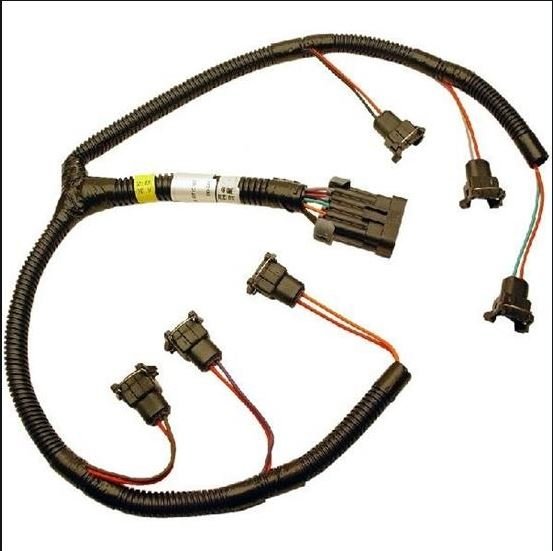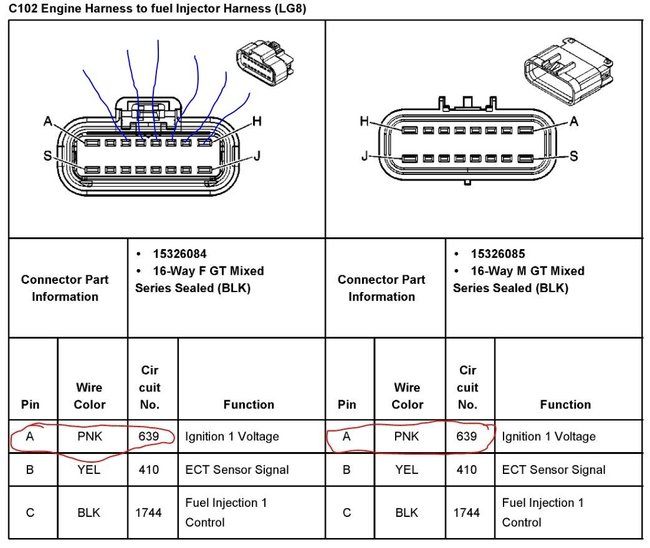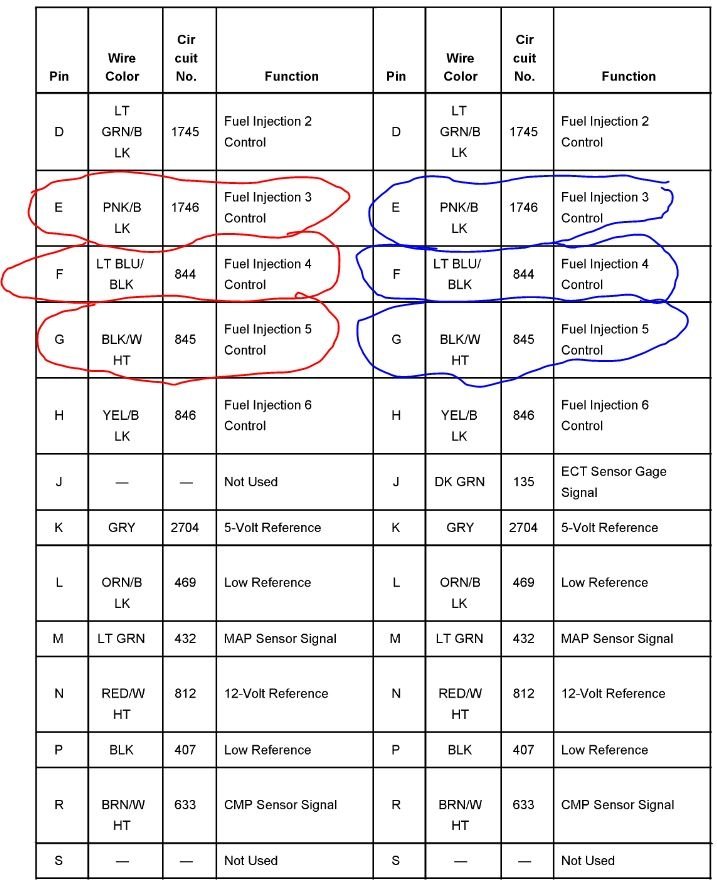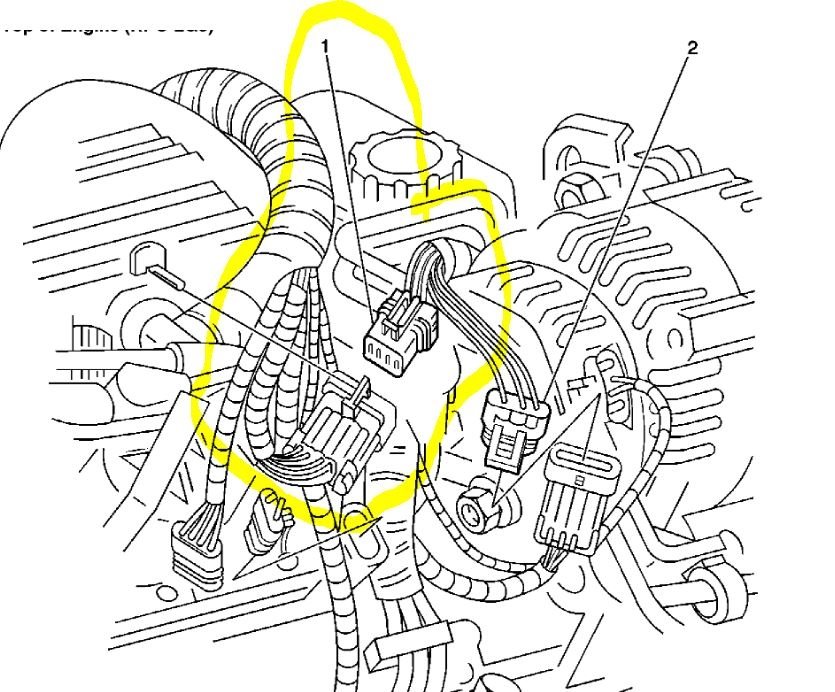Okay, a P0300 is a random multiple cylinder misfire. That code can be caused by multiple things. However with the other codes you have you have a clue. P0203, 4 and 5 are all codes saying that there is an issue with the fuel injector control circuit for those 3 injectors.
The injectors are all fed battery power on the Pink wire at each connector. The other wire on the injector is grounded inside the PCM as it activates the injectors in the proper order.
The easiest way to test them is also not real easy, you could use a noid light at each of the three injectors to test if the control and power to each is there as the noid light will blink whenever the PCM triggers the injector. The problem on that engine is the injector harness is under the intake, however there is a multiway connector that you can access that has all 6 injectors in it and it's possible to test the signals there. Unfortunately you have codes for both banks so it's likely to be the connector or harness damage like from a rodent causing the problem, although failed injectors are certainly a possibility.
To do the testing you can use a multimeter and start at the multi-connector. The three injectors use the same power feed as the others so at the moment at the connector we can assume the power is good as the splice that splits them off is inside the harness after the connector. So the first thing will be to test for injector pulse at the connector. For that a test light will be the best option. Disconnect the multi connector to isolate the injectors from the PCM. Then connect the test light to battery positive, Then have someone crank the engine while you use the tip to probe the harness on the vehicle side at the E, F and G pins in the connector. Also check the connector for corrosion and damage. At each of those three pins the light should flash briefly indicating the PCM is sending a control signal. You can check all of the injectors to be sure they are all working at that spot. If they are then the next test will involve using the multimeter on the ohms scale. For this you will use the engine side of the harness and connect one probe to pin A in the multi-connector. Then use the other probe to test each injector by touching pins C thru H which are the control wires to each injector. What you are looking for is the resistance in each coil in the injector. You want to see between 11 and 14 ohms on each one if the wiring and coil are okay. I suspect you will find the three you have codes for have a problem.
To test farther and determine if it is the injector or the wiring harness at fault will require you to remove the upper intake manifold to access the injectors and the harness. However the factory method makes you remove everything from the manifold to take it off when in reality you only need to remove the parts that hold it tight to the engine, you just need room to get to the fuel rails and injector harness and to do that I generally only remove the bits that restrict it from tipping up toward the drivers side.
Sort of like this video:
https://www.youtube.com/watch?v=FtfdngoYW8M
Then you can inspect the harness for damage. To test the injectors themselves you can unplug each one and test for the same ohm reading as before. If they all test okay, the issue is likely in the harness, if you find injectors that test very low or open then I suggest replacing them all so they have a balanced flow. Then you replace the gaskets and bolt it back together. The intake bolts all are torqued to 18 lb ft. The EGR bolts are 22 lb ft.
Images (Click to make bigger)
Monday, December 21st, 2020 AT 11:38 PM
